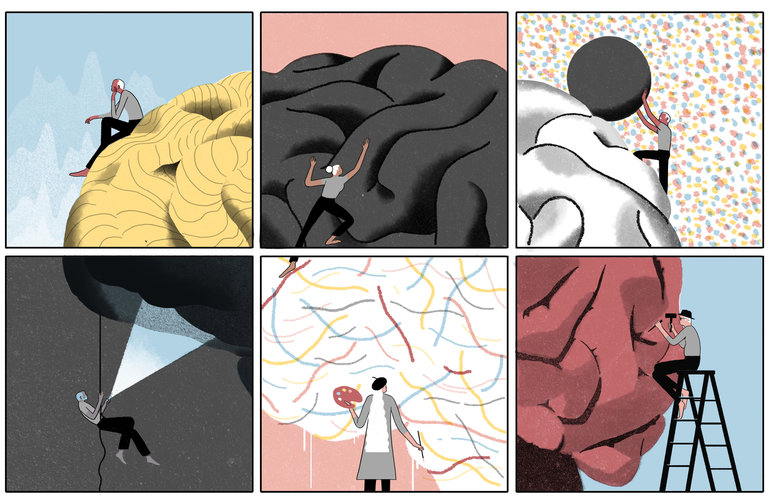
21 Jan Superaging: Super Doable, But How?
How do you become a superager? Which means in, ahem, a head-to-head comparison, your more mature brain looks and acts no differently than that of a 25-year-old. Which activities, if any, will increase your chances of remaining mentally sharp into old age? On New Year’s Eve, Lisa Feldman Barrett posted an article in the New York Times on the subject of “How to Become a “Superager.” Read on for more about secret sauces for your squash.

courtesy, New York Times, Jun Cen.
Think about the people in your life who are 65 or older. Some of them are experiencing the usual mental difficulties of old age, like forgetfulness or a dwindling attention span. Yet others somehow manage to remain mentally sharp. My father-in-law, a retired doctor, is 83 and he still edits books and runs several medical websites.
Why do some older people remain mentally nimble while others decline? “Superagers” (a term coined by the neurologist Marsel Mesulam) are those whose memory and attention isn’t merely above average for their age, but is actually on par with healthy, active 25-year-olds. My colleagues and I at Massachusetts General Hospital recently studied superagers to understand what made them tick.
Our lab used functional magnetic resonance imaging to scan and compare the brains of 17 superagers with those of other people of similar age. We succeeded in identifying a set of brain regions that distinguished the two groups. These regions were thinner for regular agers, a result of age-related atrophy, but in superagers they were indistinguishable from those of young adults, seemingly untouched by the ravages of time.
What are these crucial brain regions? If you asked most scientists to guess, they might nominate regions that are thought of as “cognitive” or dedicated to thinking, such as the lateral prefrontal cortex. However, that’s not what we found. Nearly all the action was in “emotional” regions, such as the midcingulate cortex and the anterior insula.
My lab was not surprised by this discovery, because we’ve seen modern neuroscience debunk the notion that there is a distinction between “cognitive” and “emotional” brain regions.
This distinction emerged in the 1940s, when a doctor named Paul MacLean devised a model of the human brain with three layers. An ancient inner layer, inherited from reptiles, was presumed to contain circuits for basic survival. The middle layer, the “limbic system,” supposedly contained emotion circuitry inherited from mammals. And the outermost layer was said to house rational thinking that is uniquely human. Dr. MacLean called this model “the triune brain.”
The triune brain became (and remains) popular in the media, the business world and certain scientific circles. But experts in brain evolution discredited it decades ago…


Sorry, the comment form is closed at this time.